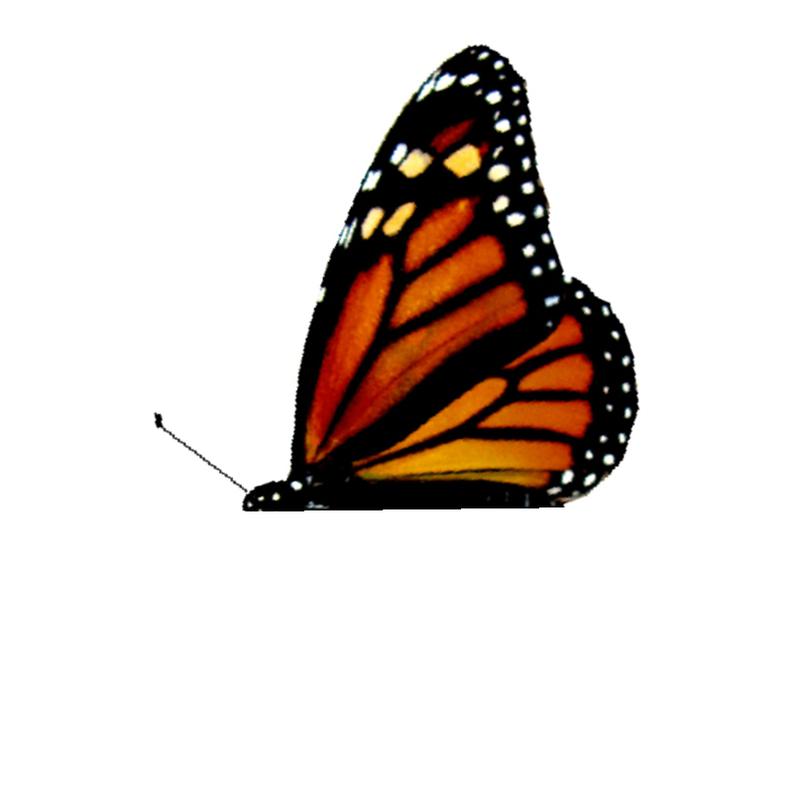C
In order to protect the threatened Monarch sanctuaries, programs have been implemented which encourages the local people to get involved. Bounties are paid for the retrieval of the numbered tags found on dead butterflies. Park officials and grass root positions help police sanctuaries and enforce regulations. Making payment to reforest rather than log protects the valuable Oyamel Fir trees and environmental tourism brings with it tourist dollars.
WHAT THIS MEANS
The Monarch Butterfly and its sanctuaries can be, for the local people, an income dependant on the protection rather than the destruction of its unique habitat. Perhaps the monies gained from illegal logging of the fir forest will be altogether replaced by an income based on the respect of a National Treasure.
 | ||||
THE GREAT MIGRATION
Each year in the Fall all monarch butterflies east of the Rocky Mountains undertake a migration of up to 2,500 miles to specific sites high in the mountains of the Transvolcanic region of central Mexico. There they remain, clustered together on Oyamel fir trees for warmth, until the following spring. With rising temperatures in February and early March, the butterflies become active and ultimately fly north to the southern United States, where the adults will lay their eggs and die. The eggs hatch, the caterpillars feed on milkweed and emerge as butterflies then continue the northward migration to the upper middle United States where they lay their eggs and die. Those eggs hatch, feed, emerge and continue north into southern Canada, following the milkweed. Those butterflies in turn lay their eggs and die. This fourth generation will develop and fly south all the way to Mexico, arriving in the same area from which their great-grandparents started in the Spring; there they will overwinter and the cycle will begin anew.
Biologists are still trying to determine exactly how the monarchs navigate their way so unerringly each year to an area they've never been to before. Although we don't yet know the full story, we do know they use the ultraviolet light of the sun to orient themselves, and they know where the sun should be in the sky at various times of the day. There are twelve or thirteen distinct areas which the Monarchs return to each year. All these sanctuaries are in the Transvolcanic region of Mexico between 9000 and 11,000 feet altitude. The Monarchs cluster together on Oyamel fir trees; these trees form a canopy which acts both as an insulating blanket, creating relatively warmer temperatures, and as an umbrella, keeping out rain and snow. Additionally, the trees act as radiators, absorbing heat during the day and radiating it at night. In this way the butterflies spend the Winter, using their stored fat reserves for energy and maintaining minimal activity. One of the threats Monarchs are facing today is that of illegal logging within their overwintering sites. Illegal logging has been increasing as residents attempt to supplement their incomes. When trees are removed this opens holes in the canopy through which rain and snow may enter and warmth can escape, endangering their winter survival.
THE SANCTUARIES
DAY OF THE DEAD
The Monarchs begin arriving at their sanctuaries in Mexico by the end of October/beginning of November each year. Within a short window of time millions of Monarchs congregate in their overwintering grounds. This annual event spurred the belief among the indigenous population that the butterflies were the spirits of their departed ancestors returning to them.
MEXICO
 | ||||
 | ||||
Have you planted YOUR milkweed, yet? }i{
MONARCHS & MILKWEED
HUMMINGBIRDS
JUST FOR FUN
SPONSORSHIP PROGRAMS
POLLINATION STATION
POLLINATION





